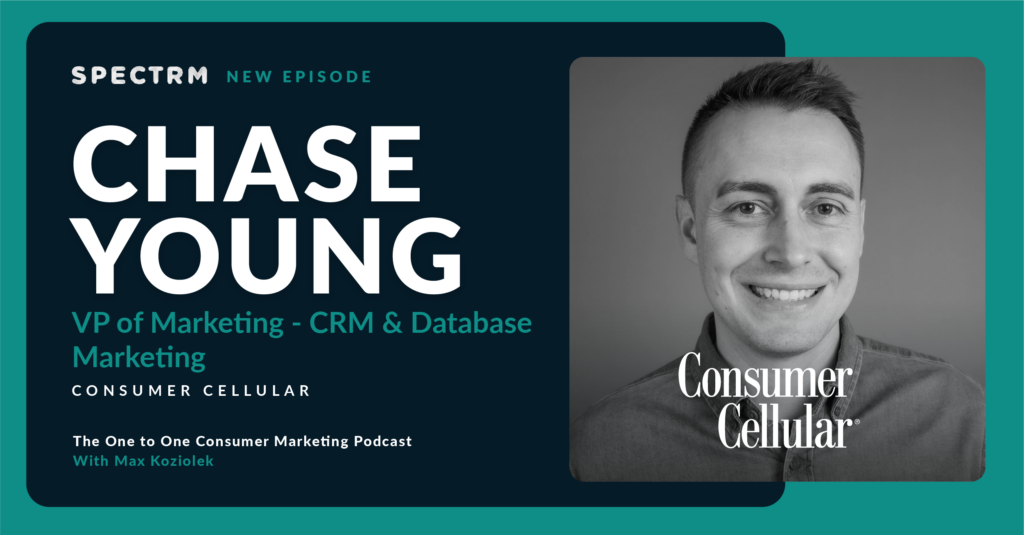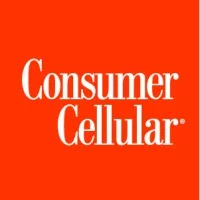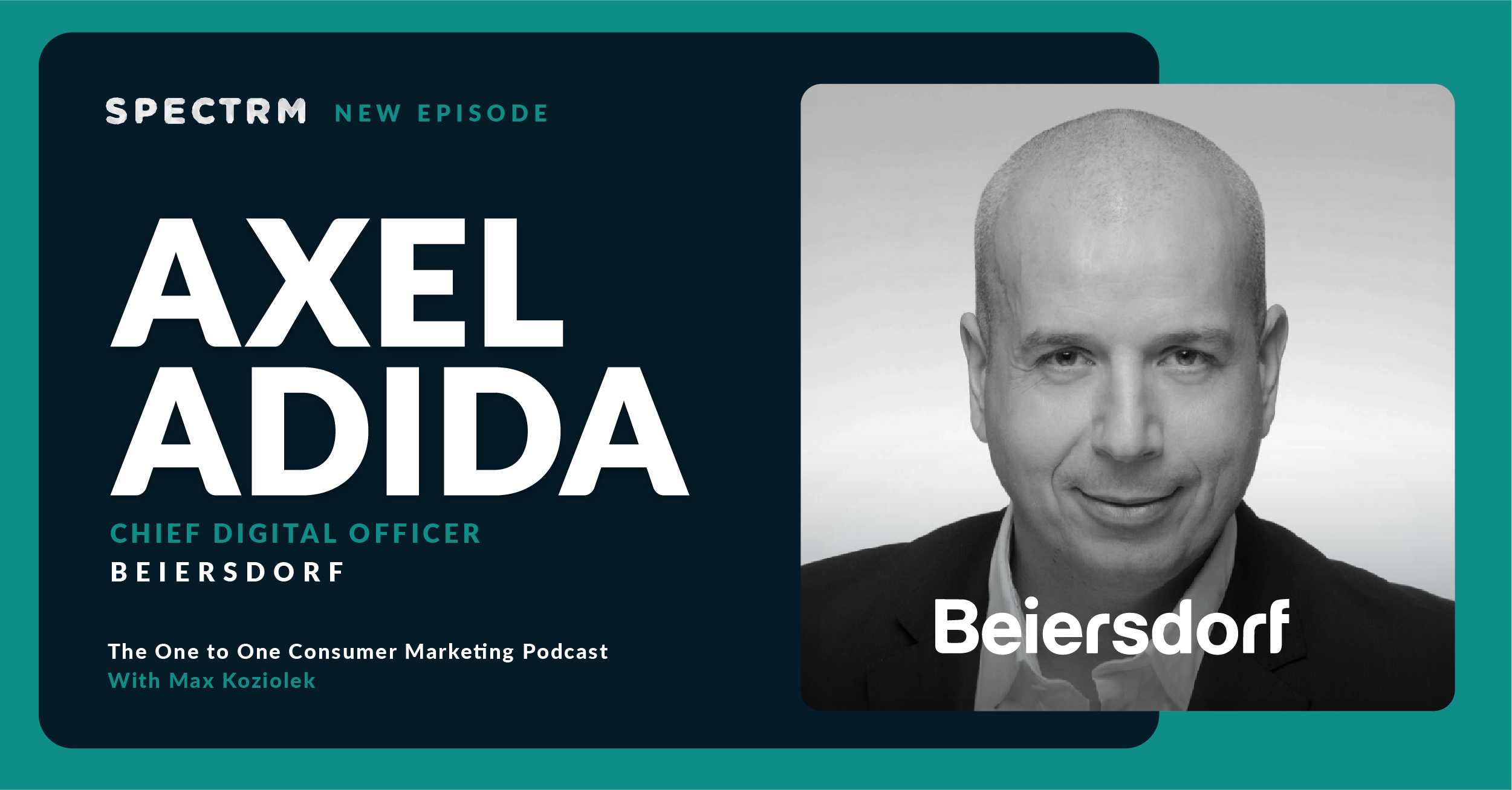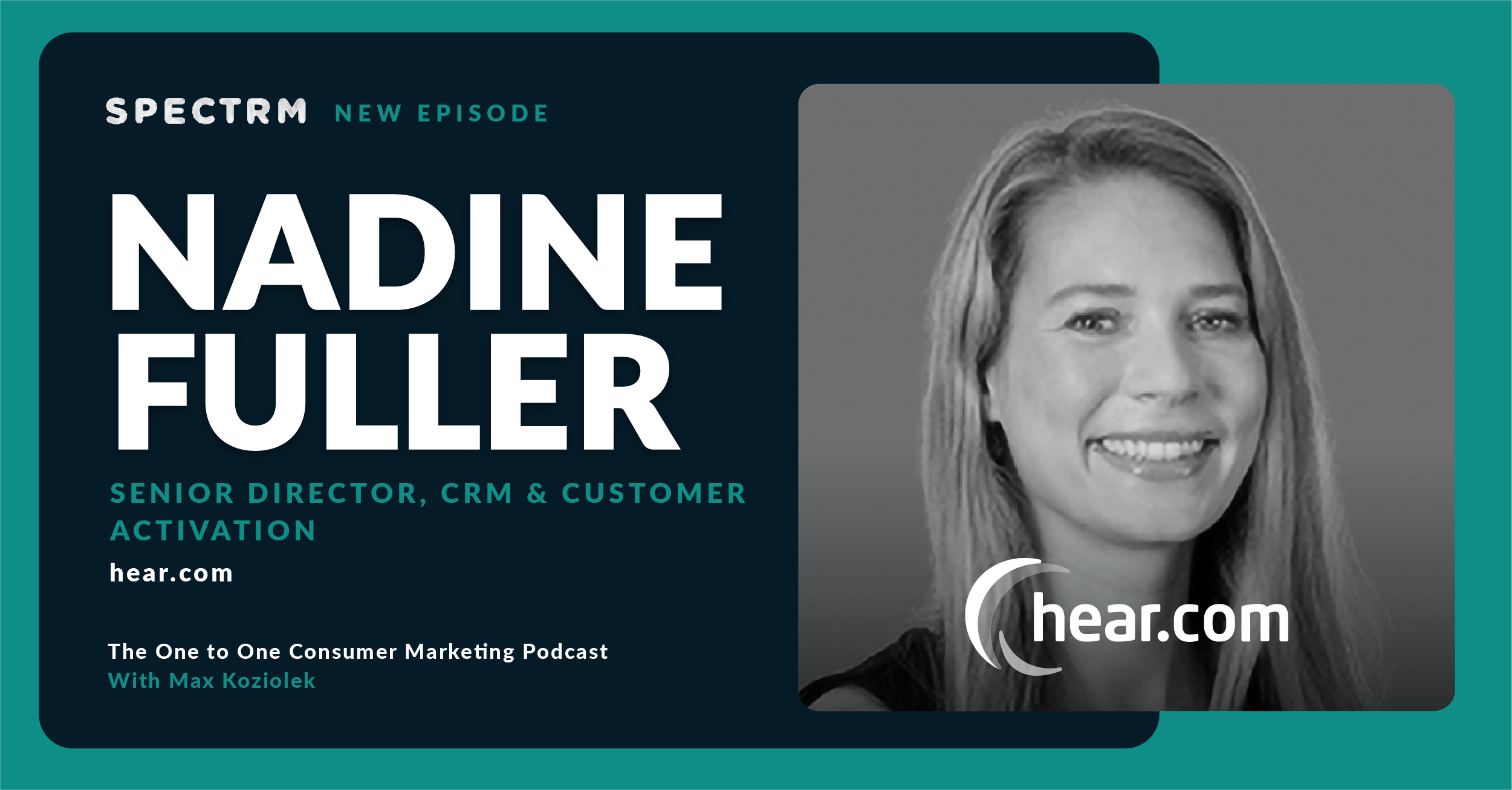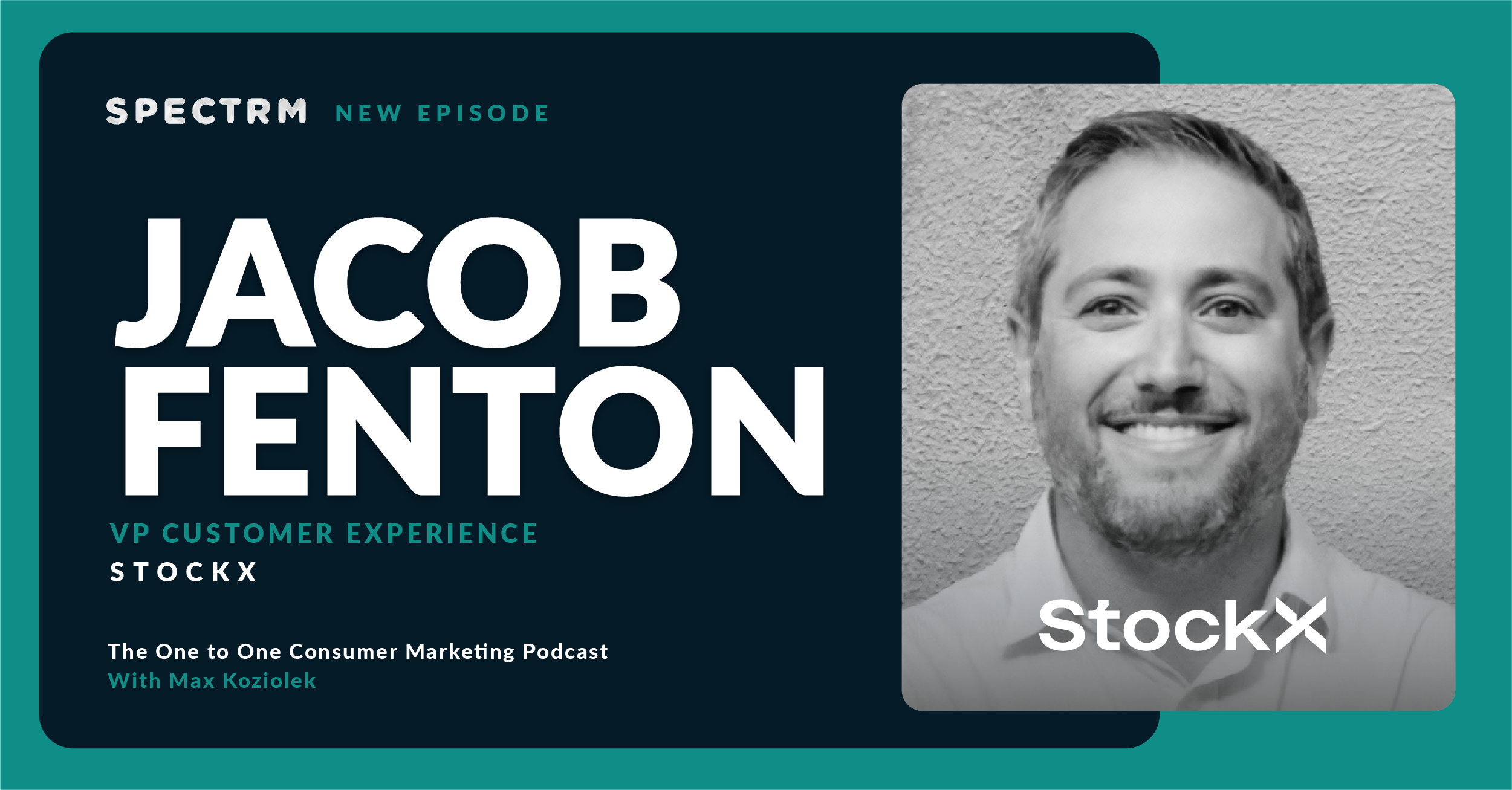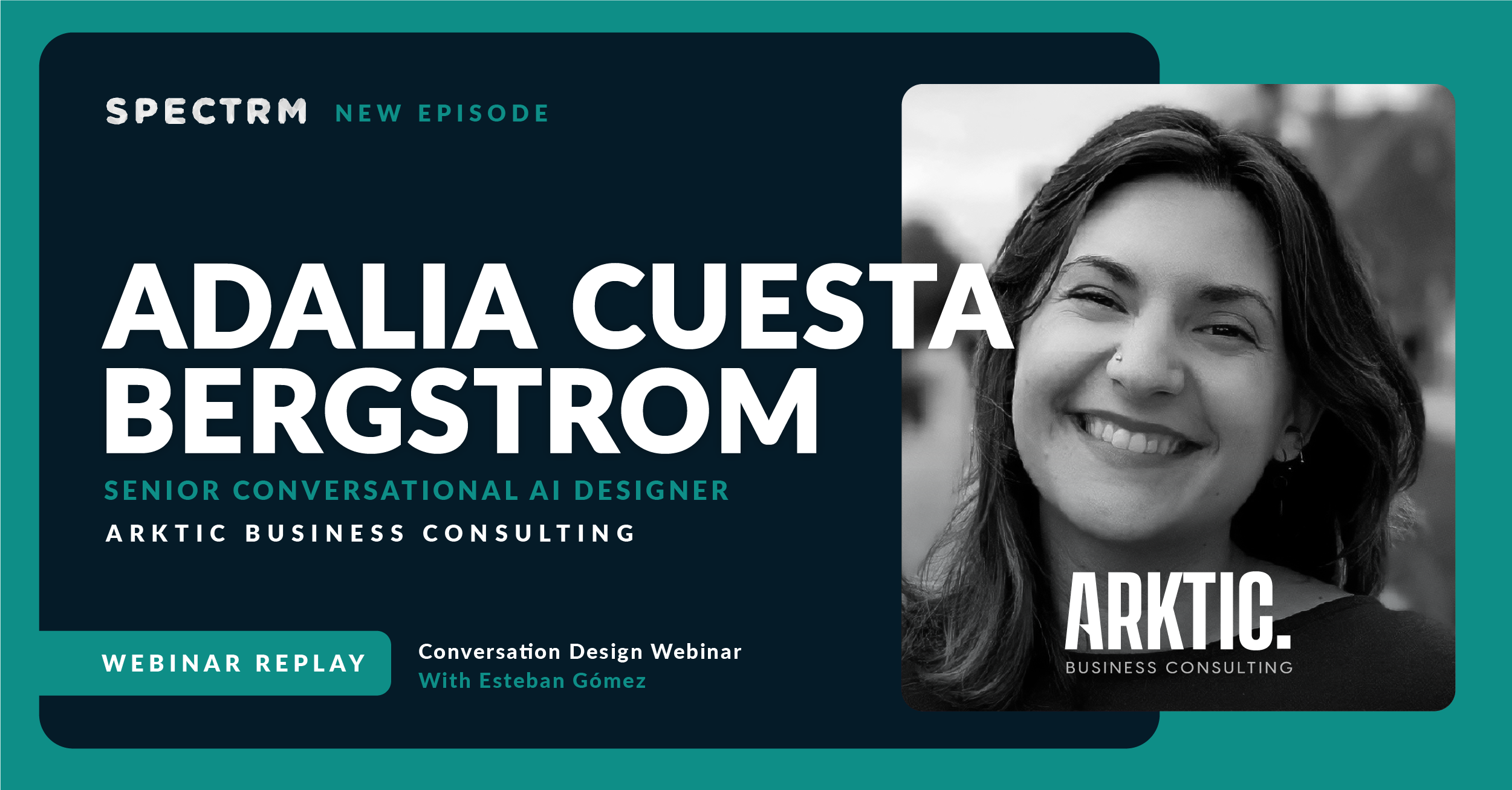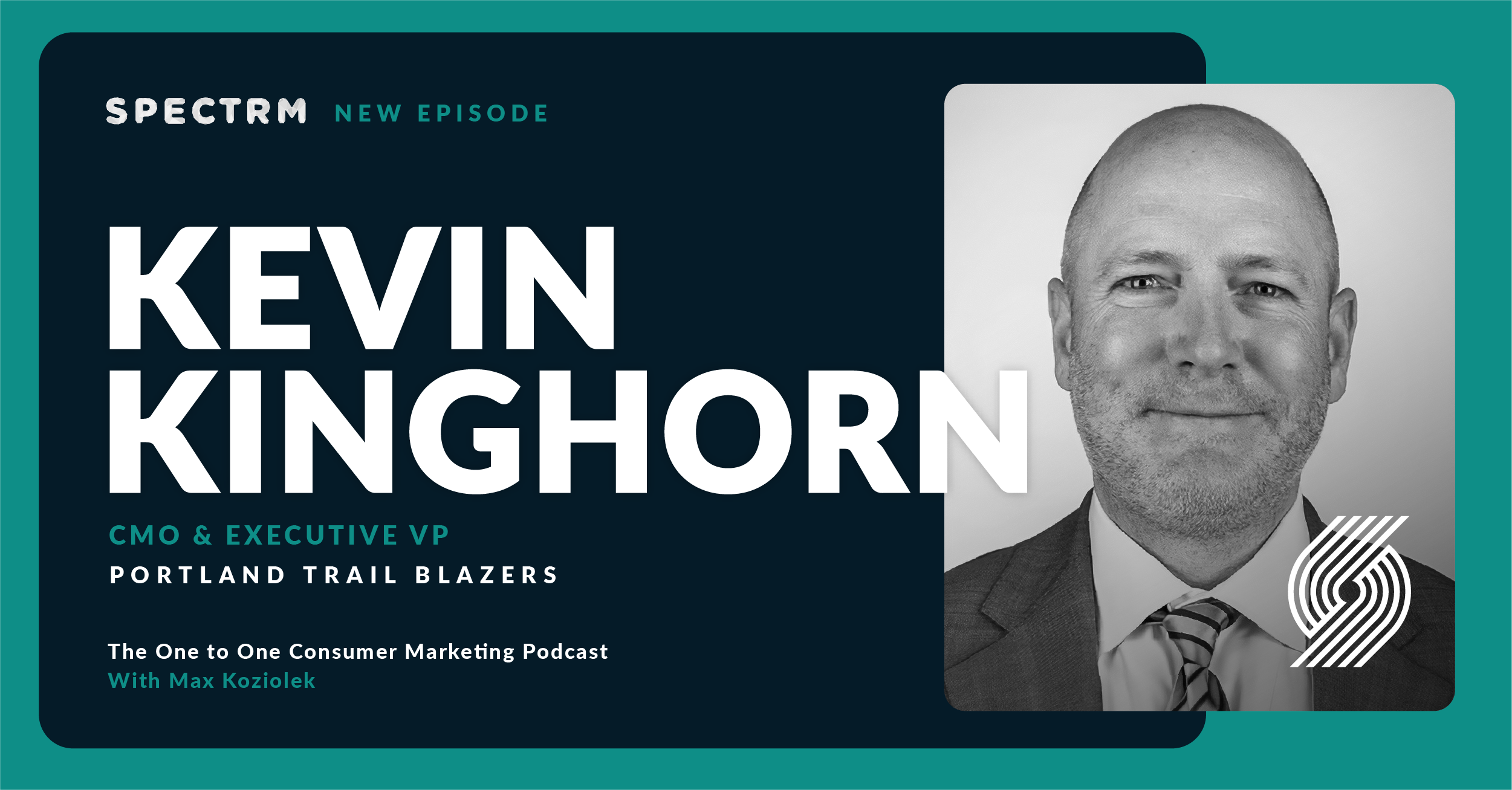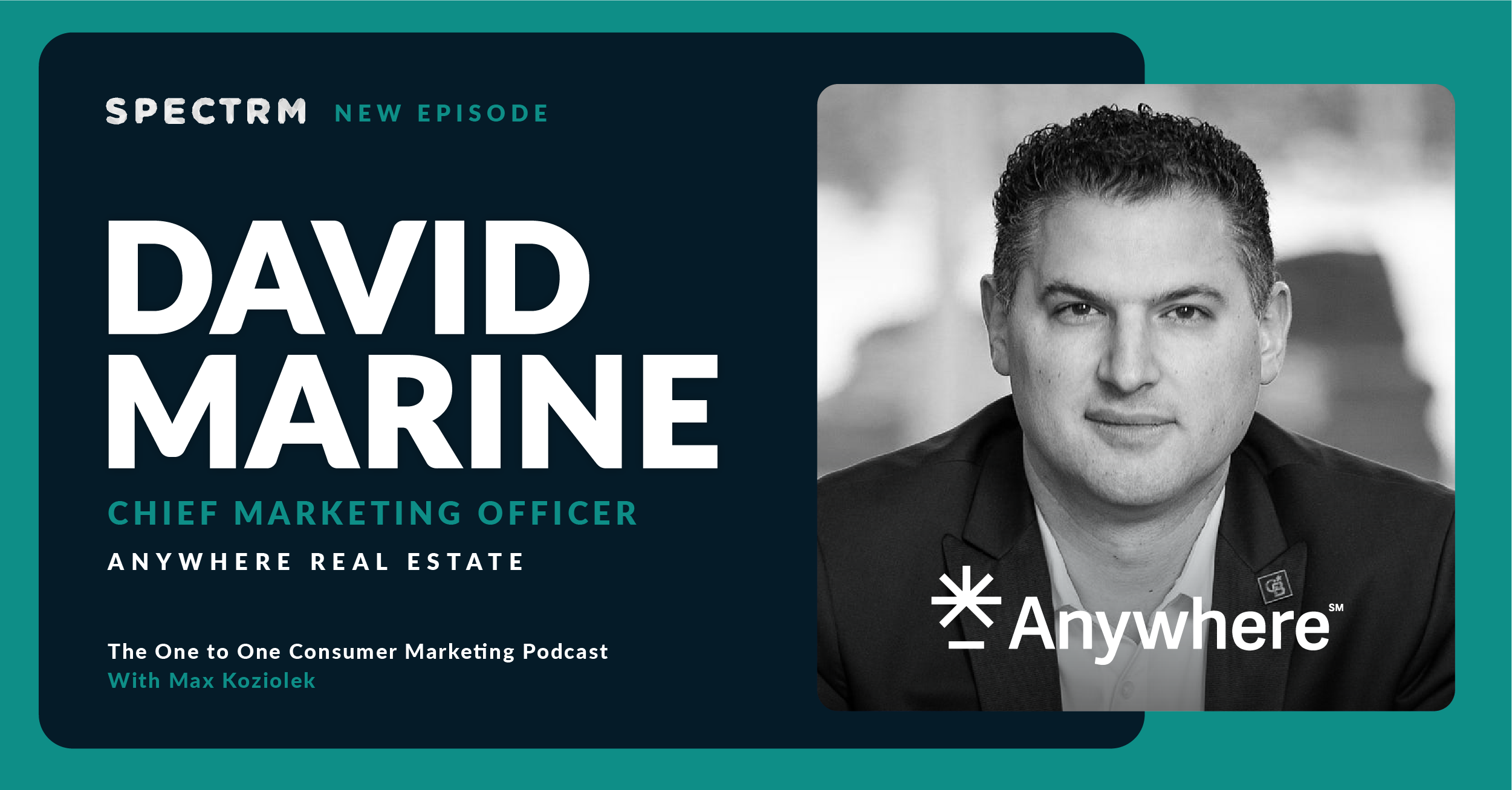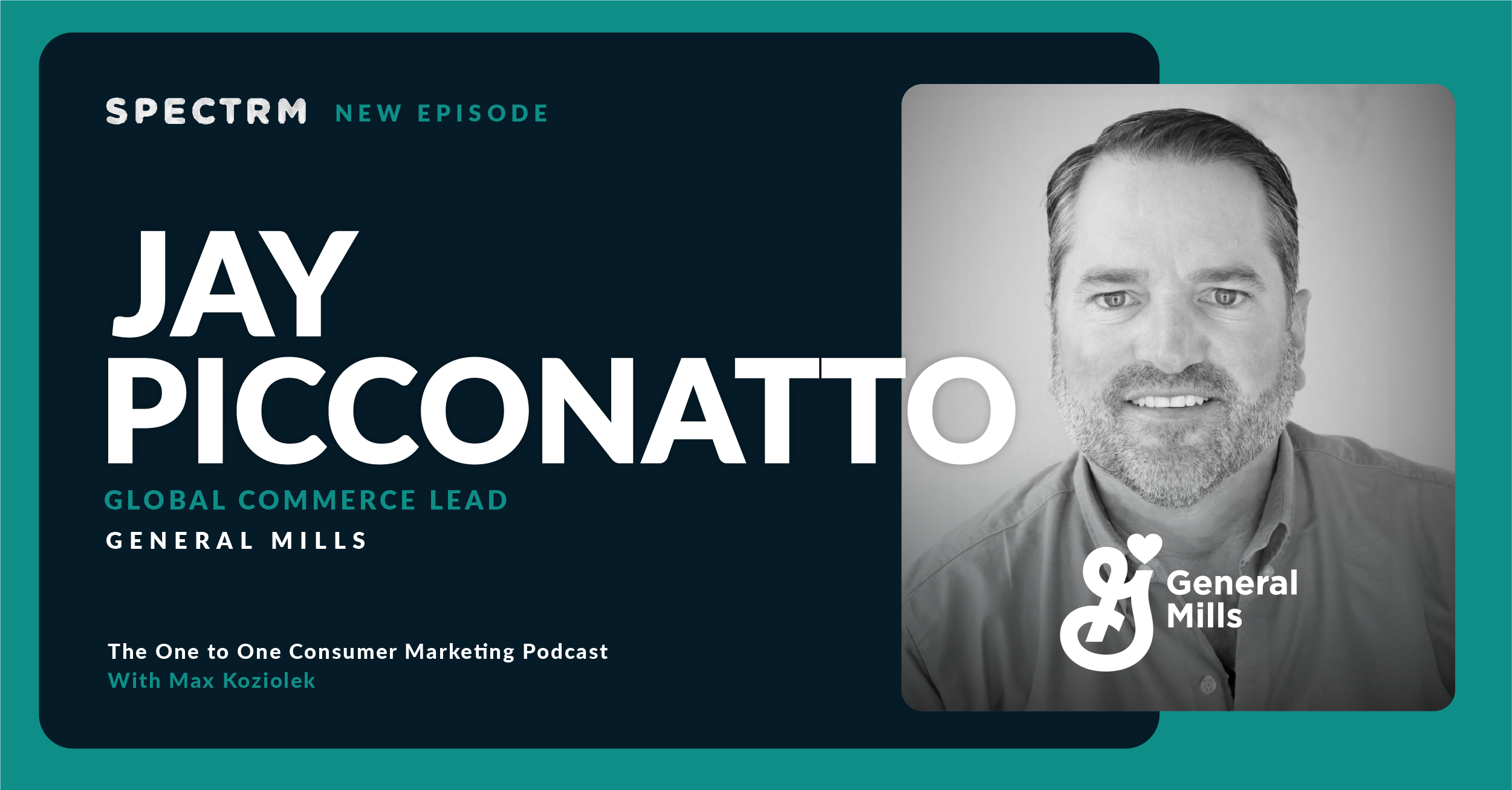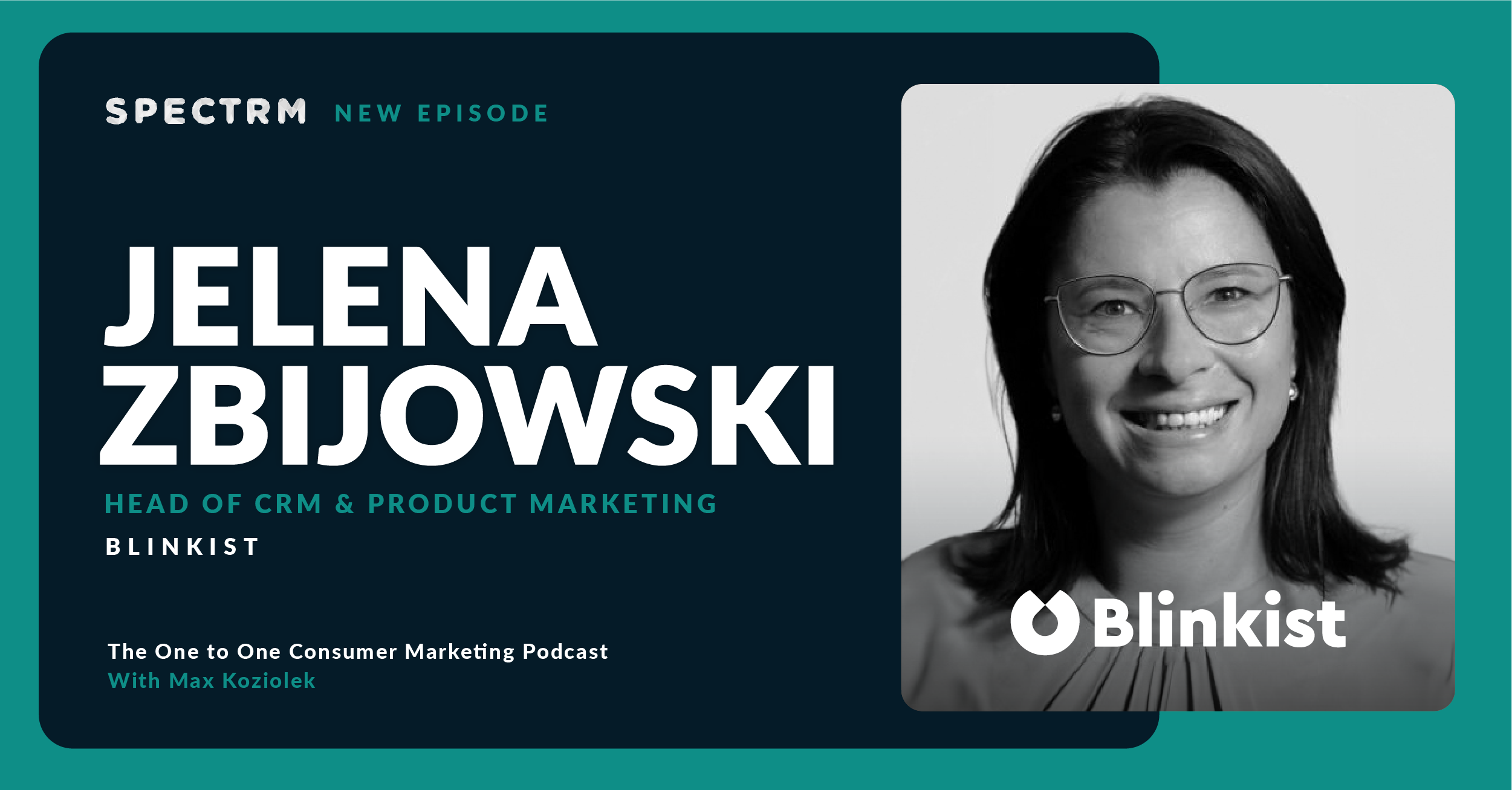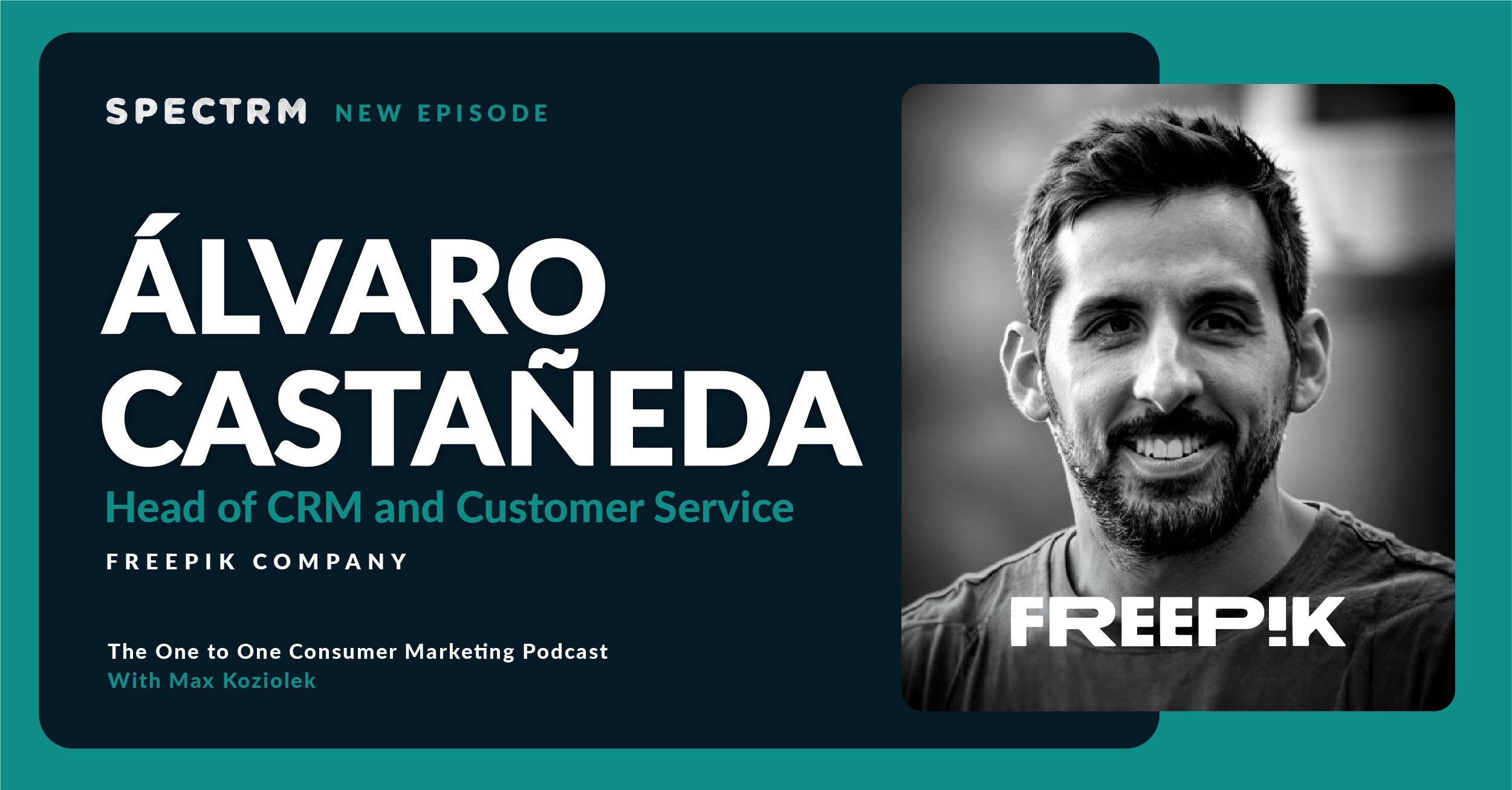Summary
Max speaks with Chase Young, VP of Marketing – CRM & Database Marketing at Consumer Cellular. They discuss how Consumer Cellular differentiates itself in appealing to their 50+ demographic, why their monthly bill is a successful marketing channel, and how they rely on education at onboarding. They also talk about how channel aggregation tools are the next tech trend, and why sending communication that feels personal is better than “the right offer at the right time.”
Topics discussed
- How Consumer Cellular differentiates itself in how they appeal to their target audience in the 50+ demographic.
- Why one of the successful channels for Consumer Cellular is the physical bill they send out.
- The challenges to retaining customers, including poor cell service and lack of tech knowledge — which can be remedied with education.
- Advice for consumer marketers to try on different roles for more insight into other business units.
- How marketing tools are evolving to include more channel aggregation.
- Why “being personal is better than personalizing” and how we can’t always rely on technology to “speak from the heart.”
I think it's easier for a more mature demographic. Our customers, many of them are fiercely loyal. They love us, they love our brand and we love them. So I think with a younger demographic, they're always kind of looking for the next new thing. They're more willing and able to move from one business to another, from one company to another, where our demographic, I think, seeks out stability and seeks out a business that cares about them and really values and prioritizes customer service, which is something we really focus on.
Guest biography
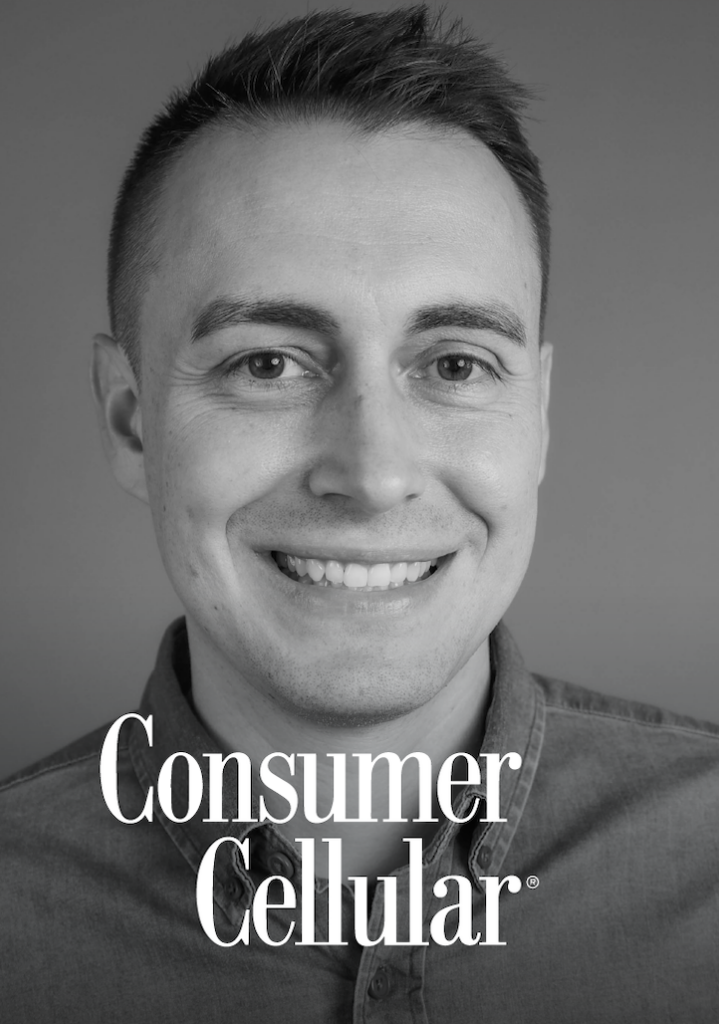
- Seasoned marketing professional with over 10 years of experience in consumer marketing, currently focusing on CRM & Database Marketing at Consumer Cellular.
Company overview
Consumer Cellular has more than four million customers nationwide and is a top-rated wireless provider that markets no-contract cellphones and service plans primarily to those 50-plus. Founded in 1995 on the belief that everyone should have affordable access to the safety and convenience of cellular service. The Scottsdale, Arizona-based company utilizes the nation’s largest voice and data network, which covers 99% of the U.S. population.
Industry: Telecommunications | www.consumercellular.com
Subscribe to the podcast newsletter
Transcript
00:00
Chase Young
I think it’s easier for a more mature demographic. Our customers, many of them are fiercely loyal. They love us, they love our brand and we love them. So I think with a younger demographic they’re always kind of looking for the next new thing. They’re more willing and able to move from one business to another, from one company to another, where I think seeks out stability and seeks out a business that cares about them and really values and prioritizes customer service, which is something we really focus on.
00:43
Max Koziolek
Hey everyone, and thanks for listening to the one to one consumer marketing podcast. Today I’m speaking with Chase Young, VP of marketing CM and database marketing at consumer Cellio. Thanks for chatting with me today.
00:53
Chase Young
Yeah, thanks for having me.
00:55
Max Koziolek
Before we get started, why don’t you tell us a little bit more about yourself, your background and how you ended up in your current.
01:02
Chase Young
Sure. So, you know my first role out of college was in New York City with the Nielsen company. Know I was analyst, really crunching numbers, helping people figure out their media buys. Long story short, I found my way into product management and then eventually marketing was a client of mine. As a product manager I was helping to integrate different marketing tools and things and eventually decided to give marketing a shot and started doing that at lifelock and then eventually moved over to consumer cellular. Followed a former leader and made my way here. So been doing it quite a while and I quite enjoy it.
01:43
Max Koziolek
Yeah, very cool. I don’t hear that often that people come from fraud arc, but given how technical marketing is these days, that makes total sense. And following a former leader, former boss I think is always a good choice because you work together. So very cool. Speaking about consumer cellular, I think you have a quite interesting and unique approach in your go to market. You have, I think over 4 million customers nationwide. But you have a specific idea about your customers. And I will start with a quote of that. And that is ten in ten images of people over 50 depicted in isolated situations, often seated alone with a partner or with a medical professional where they were recipients of care. You target this group of people. How does the marketing change due to our target group?
02:34
Chase Young
Yeah, we feel like a lot of our competition, we feel like a lot of companies targeting the 50 plus demo look at them as if they’re in their last chapter. We don’t feel that way. In a lot of ways we think they’re in their next chapter. And in a lot of ways we think they’re more free than any other demo out there. They’re unencumbered by children in the home many of them have disposable income or are retired and free to travel. So we wanted to capture this demo in our marketing the way we think they’re living their lives, which is not in isolation, it’s not all these old people with nothing to do. They live very rich lives.
03:17
Chase Young
And so we wanted to show them in images in our marketing, the way that they’re living so that they see themselves in our marketing makes total sense.
03:25
Max Koziolek
And I think it’s a much more accurate picture than always showing them with a medical professional or alone sitting on the couch or something like this. But given that you’re responsible for customer lifetime CRM, how do you approach that? What kind of channels are working for these demographic and which doesn’t work or don’t work?
03:49
Chase Young
Yeah, sure. We’re in every channel you can think of. Obviously with CRM we try to take advantage of what we call owned channels or free channels. So things like email marketing, sms push notifications, we have a blog and a newsletter and of course our website and our portal or their account customers account. One of the channels that surprisingly works really well for us is our statement or our bill or invoice. So a lot of our customers still choose to receive a physical invoice in the mail. So along with that, we can send marketing collateral, whether it’s on the invoice itself or an insert inside of the invoice. And my opinion as to why it works so well is one of the things happening sort of in our culture right now.
04:38
Chase Young
There’s tons of scams and tons of phishing and smishing and all those different types of things out there today. The bill is a trustworthy medium. They know it’s coming from us. It’s got our logo on it. They’ve received it over and over again. They know it’s not a scam. So there’s a lot of authenticity that rides along with the invoice.
04:57
Max Koziolek
That’s a very cool strategy. I mean, direct mail, I’ve recently seen a startup which is saying it’s becoming the clavio, which is an email personalization provider for direct mail. So there seems to be, that channel seems to be on the rise. Are you able to track that on a consumer level basis or do you integrate this, how do you integrate this into your workflows?
05:21
Chase Young
There’s different types of mail. We do one to one marketing mail where outside of the invoice, right. We just send letters to people and we can track, there’s a lot of different ways to track mail. You can track with unique phone numbers and track with unique URLs or QR codes. But in the end, with mail, the best way to track it is through what we call matchback. So you know the address you’re mailing, you know their name, you know who they are. So once they contact you and enroll or purchase, you match back that address and that name to the action you see on the other side. So the matchback signal is the primary signal, and then you have secondary signals like phone calls or web visits or whatever interesting mechanism.
06:08
Max Koziolek
I mean, then matching that backward, how do you see for the retention side of how hard is it to keep people happy, to bring them, to upsell them across them? Is that easier than you would think for younger demographics, or is that harder?
06:25
Chase Young
I think it’s easier for a more mature demographic. Our customers, many of them are fiercely loyal. They love us, they love our brand, and we love them. So I think with a younger demographic, they’re always kind of looking for the next new thing. They’re more willing and able to move from one business to another, from one company to another, where our demographic, I think, seeks out stability and seeks out a business that cares about them and really values and prioritizes customer service, which is something we really focus on.
07:02
Max Koziolek
Interesting. And customer service means for you mostly if they call, you pick it up, right? So that’s probably calling is still the most important channel for that. And if you call that, then you have a low time to pick up the call. Is that correct?
07:16
Chase Young
Yeah, totally. If they call us, we monitor our call wait times and our call handle times, just like any business with the call center. But we take pride in how quickly we answer the phone. We take pride in how quickly we can help resolve their issues. But we also don’t focus on hanging up as quickly as we can. If somebody wants to talk about the weather, we’ll talk about the weather with them. And that starts at the top with our leadership, like we care. We want to make sure that the customer is feeling good about their product. We take our time with them. And you know what? Sometimes we do outbound calls.
07:55
Chase Young
If we notice somebody’s had a bad experience or we see that they’re not using the product as much or maybe as much as we think they should, we’ll call them and just check in. How are you doing? Can we help kind of thing. And I think customers really appreciate that.
08:12
Max Koziolek
Are these outbound calls in your team or is that in a different team? Because I think from a CRM perspective and keeping customers happy, that’s a great technique. To come proactively. Right. So not only reactive things are, and they complain, but rather going proactively looking at product adoption, is that part of your team or is that a different team?
08:34
Chase Young
So it’s a partnership. So what we do is it’s a partnership between three teams, at least at consumer cellular. So we have a data science team that is running analysis and helping us identify people that could benefit from an outreach. So they’ve built a model based on a whole bunch of inputs. And then once we’ve identified that audience, we’ve got to send that data over to our tools so that we first notify people either via email or sms, typically that we’re going to call them. We found that if we give them a heads up, they’re more likely to answer the phone. So we say, hey, in the next 24 hours, we’re going to call you from this phone number. And then, of course, the call center team is the ones that actually pick up the phone and dial and talk to the customer.
09:22
Max Koziolek
Very interesting. Very interesting. And is email. And you mentioned SMS as well. Are you always shooting both or use segment customers which are email customers or SMS customers? How do you do that one?
09:36
Chase Young
Yeah, it just kind of depends. Every customer we have has a phone. We’re sort of in a unique situation. So SMS is a really powerful tool for us because we know everyone’s phone number. We know they have a phone in their hands. We don’t have the email address on every customer. So typically we start with SMS, with an outbound call campaign anyway, because we know they’re going to view the message on the phone and that’s what we’re going to be calling. And we have all of those phone numbers. So with that type of campaign, we start with SMS and then augment it with email.
10:16
Max Koziolek
Of course, for both markets, vice versa. Right. So they have often the email address, but they would love to have the phone number, but they don’t have. Even though I think, especially in the US and in e commerce, the SMS marketing really picked up in the last four or five years, I would say. But of course, for you, it’s a different, completely different position or different situation. When you look at the customer lifecycle. You mentioned that they’re much more loyal overall as a group. But what are the biggest challenges around this demographic?
10:47
Chase Young
Yeah. When people churn from our business, it’s usually due to two issues. The first one is poor cell service. If they’re in an area that has bad service, which, let’s face it, we have great service. We’re confident that we can serve. I think we say 99.9% of all the zip codes or areas in the US. But every now and again you get somebody that lives in an old home, an old brick home, or doesn’t get service in their basement, but does on their main floor. That can be a challenge for us.
11:23
Chase Young
So we try to educate folks when they on board with us and give them tips on how to improve their service, whether it be turning on Wifi calling or making sure they’ve upgraded to the latest operating system on their device, or in some cases even have some customers need to upgrade their device. Maybe they have a ten year old phone that isn’t able to take advantage of the best and greatest network. So at first it’s all about education to try to help make sure they have a great service. The second reason that we see people churn is, and it’s specifically challenging for our demographic, is sometimes they’ve got an iPhone 15 in their hand, but they don’t know how to use it, they don’t know how to take advantage of the technology.
12:12
Chase Young
So we’ve got to really try to help them get the best or get the most out of their phone, which is a different challenge. But again, it starts with education.
12:21
Max Koziolek
I hear that so often that every kind of retention effort, they either work or don’t work, just depending on the onboarding. And it seems to be managing expectations here with your onboarding is the same, right? If that’s one of two reasons, that’s huge. Very cool, very good insight. Thanks for sharing this. I think you are a leader in the CRM space. What kind of piece of advice do you have for other consumer marketers who would like to become a leader in CRM?
12:50
Chase Young
Yeah, good question. I think being willing to try new things is important. I mentioned at the onset of the call I started as a data analyst in my career. I went into product management, product marketing. All of these different orgs and disciplines I think are related to each other. So if you want to be a leader in CRM, but you’ve got an opportunity to take a product manager role or product owner role, give it a try. You don’t have to stay within one vertical, if you will. And I think my opinion is that my experience in other departments gave me an edge when I communicate requirements for integrating a new software tool to product. I know the lingo, I know the language, I know how the prioritization and backlog works, I know how to course trade or whatever it is.
13:43
Chase Young
And that makes you more adept and wins you business partners across different orgs. That’s what’s helped me, I think.
13:49
Max Koziolek
Very cool. Yeah, I mean, cross couple are in. Working with other teams is probably one of the most important skills by now. I mean, in CRM you’re only as good as you are able to work with other teams. That makes a ton of sense. Yeah. I think product management has quite a few interesting frameworks which are helping all the time jobs to be done. I would recommend almost to everyone to have a look at this because it allows, that’s what product managers use to state really clearly what a requirement is and what the user of that product tries to achieve. I think that’s, for example, one I would always recommend to have a look at and to learn because it’s so easy and clear and exactly as you said. You speak their language. Cool. Very good.
14:34
Max Koziolek
From a technology point of view, you come from products where you have a very good understanding of that. How do you foresee that to evolve over the next two to three years? I mean we have AI as a very big trend, but what is your expectation how the technology is going to.
14:50
Chase Young
Change in the CRM world? I think you’re going to see more and more aggregation of channels. More and more multichannel tools are going to, I think, come to the forefront where as someone that’s in so many different channels, it can be very difficult and challenging to plan omnichannel marketing when your tools are disparate. So I think as the space matures, you’ll see some of those channels sort of be aggregated within one tool set or one platform at least. And you see a lot of people already trying to do it, right? Adobe is trying to do it and braze is trying to do it. They’re all starting to bring in Clavio. You mentioned on the call he has sort of a solution for mail now. I think that’s a pattern that we’re going to see continue.
15:38
Max Koziolek
Yeah, I agree. I mean there are a few companies which are trying or a good position to do that. Right. Adobe Salesforce, maybe HubSpot for smaller ones. Yeah, I’m probably also consolidation or a lot of integration. See, let’s see. I have the feeling it’s always like a little bit know. It’s swinging from one area to the other one. First you have best read, so you’re always going for the best tools. Then you have consolidation. You try to put everything in one tool and then goes back and forth a little bit. Let’s see where we are in a couple of years. Going away from the technology five years from today. Consumer marketing in general, what works, what.
16:14
Chase Young
Doesn’T work, what works, and what doesn’t work five years from today. I think this is, maybe it’s a hot take, maybe not. I think the AI rage is a little bit overblown in the hot topic or the hot button is personalization brought on through AI. I sort of believe that being personal is more important than personalizing, and I’ll kind of explain what I mean. You can send what you think is the perfect offer to a customer based on some algorithm, but if you deliver it in a way that’s impersonal, they’re not going to care. You send a message from, or at least that appears like it’s coming from a customer care agent. It’s written in the right tone of voice, maybe even has an image of the person that sent it that feels personal. It’s going to land with the customer a lot better.
17:07
Chase Young
And I think we’re sort of losing the personal element in our marketing and relying too much on the technology and letting it do the work for us, where it’s like, just step back and think, what would you want to receive? How would you want to be spoken to? And I think specifically for our demo, it makes a really big difference if you deliver a message that seems personal and as cliche as it sounds, speaks more from the heart than from a machine.
17:37
Max Koziolek
I love that. I think it’s a very good hot take putting back into personalization. I like that a lot. Chase, that was very fun. Thank you for taking the time. If people want to follow your journey, where should they go? Is it LinkedIn or is it elsewhere?
17:55
Chase Young
Yeah, I suppose LinkedIn. I spent so much time on computers, devices. I have two little kids, so I try to stay off the technology as much as I can when I’m not working. But if people want to follow me on LinkedIn, happy to connect there.
18:11
Max Koziolek
Sounds good. We will put that into the show notes. All right, well, thanks again, and we’re looking forward to seeing you execute on your vision. And let’s keep in touch.
18:20
Chase Young
Right on. Thanks, Max.
